The Story behind Banchan (반찬): Why Do Koreans Eat So Many Side Dishes?
Korean meals are often a delightful experience for the tastebuds, but it’s the wide array of side dishes that truly sets Korean dining apart. If you’ve ever sat down for a Korean meal, you’ve likely been greeted with a seemingly endless selection of side dishes — each one unique and bursting with flavor. These small dishes, collectively known as banchan, play an essential role in Korean cuisine, offering variety, balance, and a deeper connection to cultural traditions. But why do Koreans eat so many side dishes, and what is the story behind this culinary custom?
In this article, we’ll explore the fascinating world of banchan and uncover its rich history, cultural significance, and health benefits. Let’s dive in to understand how these tiny dishes have come to shape Korean meals and why they continue to thrive in the modern dining world.
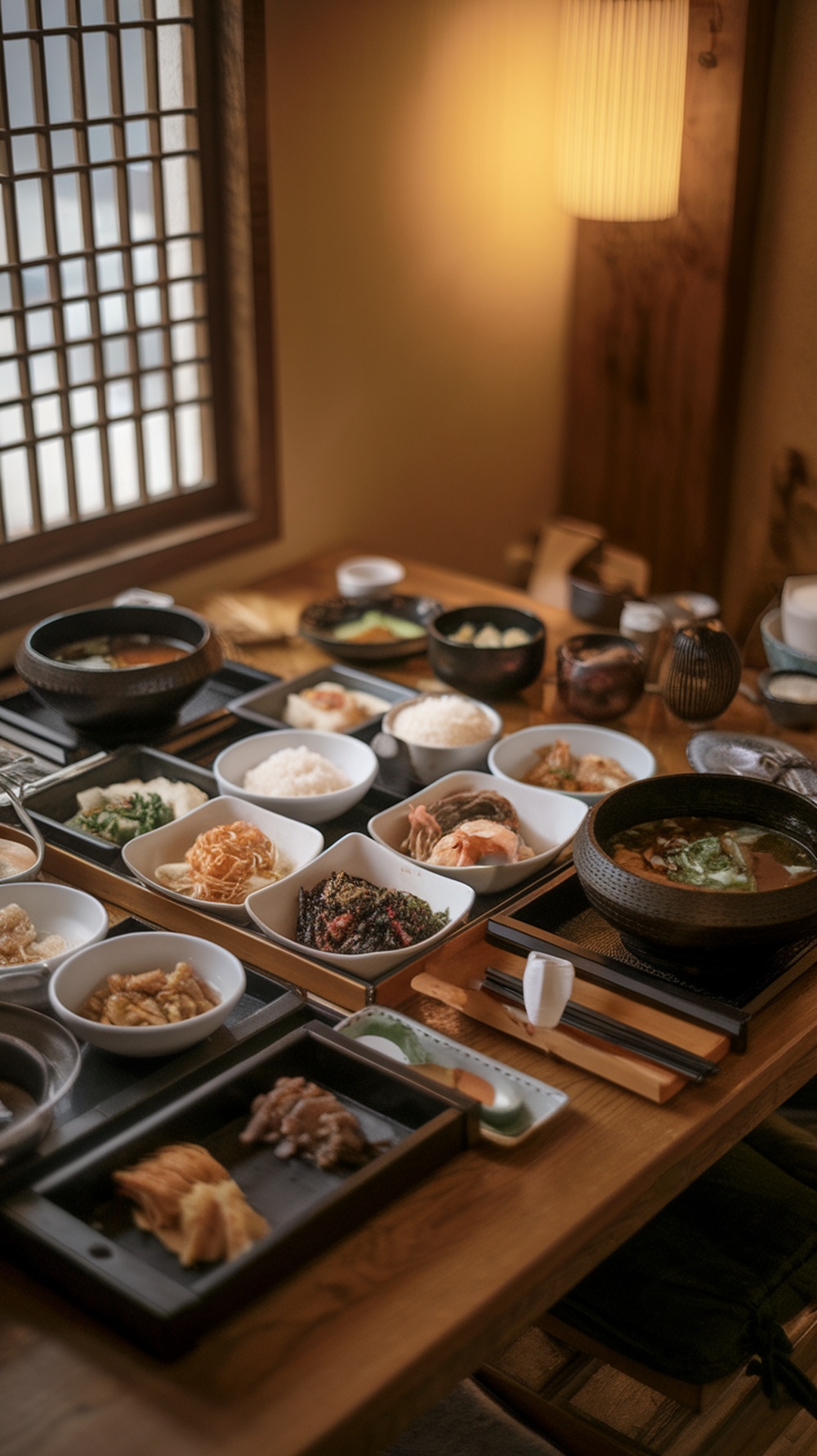
What Is Banchan? A Quick Overview
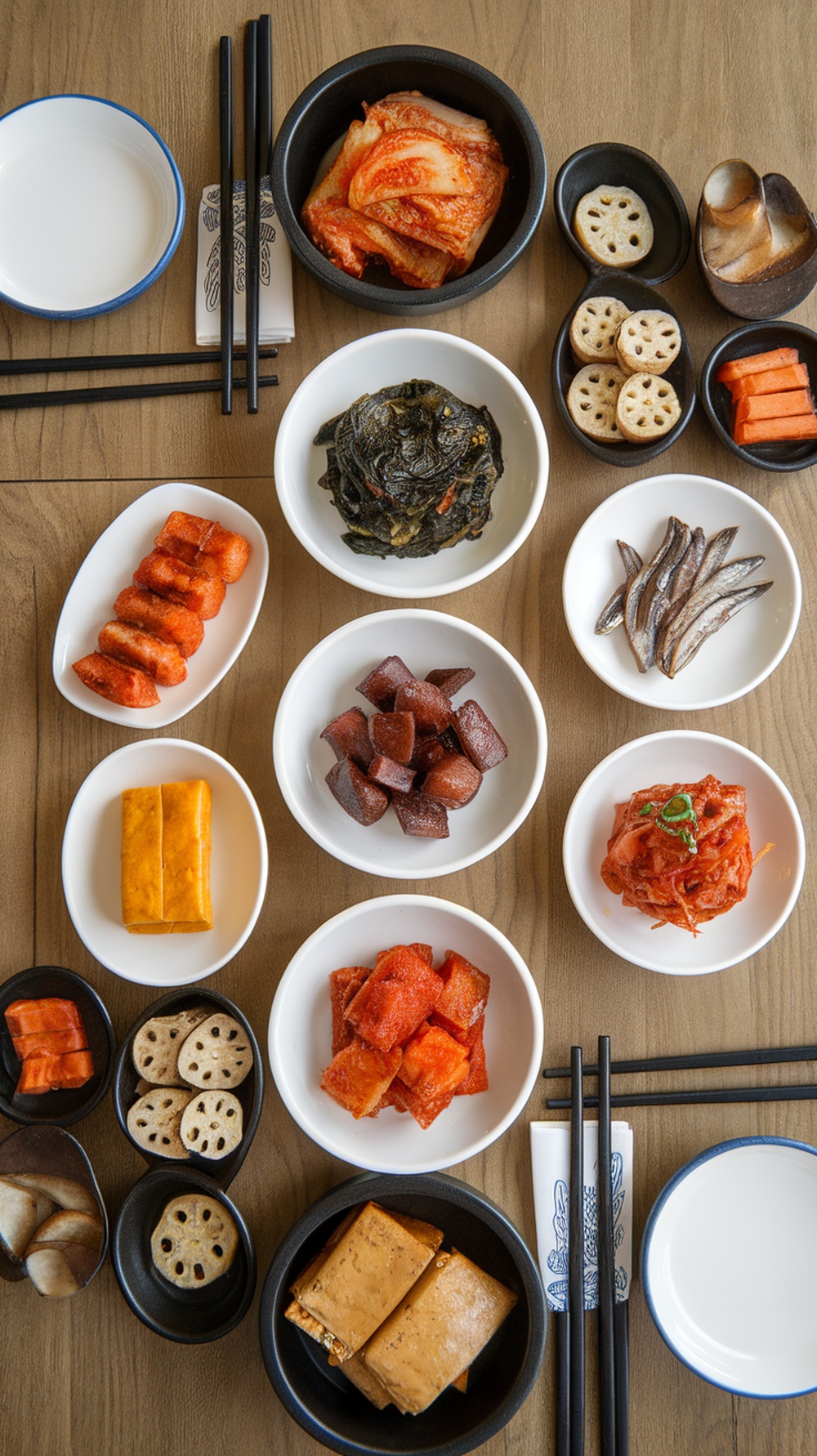
Banchan, which translates to “side dishes,” is an integral part of Korean cuisine, typically served with a main dish of rice and a few other key components. These dishes are small, varied, and often numerous, with each meal usually accompanied by at least 4 to 12 different banchan. While the specific types of banchan may vary depending on the region and occasion, the common denominator is that they are all designed to complement the main course, providing diverse flavors and textures.
The diversity in banchan is truly remarkable. From the iconic kimchi — fermented vegetables like napa cabbage or radish — to lighter, refreshing namul (seasoned vegetables like spinach and bean sprouts), each dish offers something unique. Whether it’s a savory braised dish like jorim, stir-fried snacks such as bokkeum, or a delicate steamed creation like jjim, banchan showcases the complex flavors that make Korean food so delicious. These small plates create a balanced eating experience, offering a harmonious combination of salty, sweet, sour, and umami elements that complement the main meal.
Moreover, the practice of eating multiple side dishes promotes a sense of sharing, emphasizing the communal nature of Korean dining. In Korean culture, meals are often enjoyed with family and friends, with everyone sampling a variety of banchan. This encourages socialization and fosters a sense of unity around the table, which has been an essential part of Korean culinary traditions for centuries.
Types of Banchan
Kimchi (김치) – Fermented Vegetables, Usually Napa Cabbage Or Radish
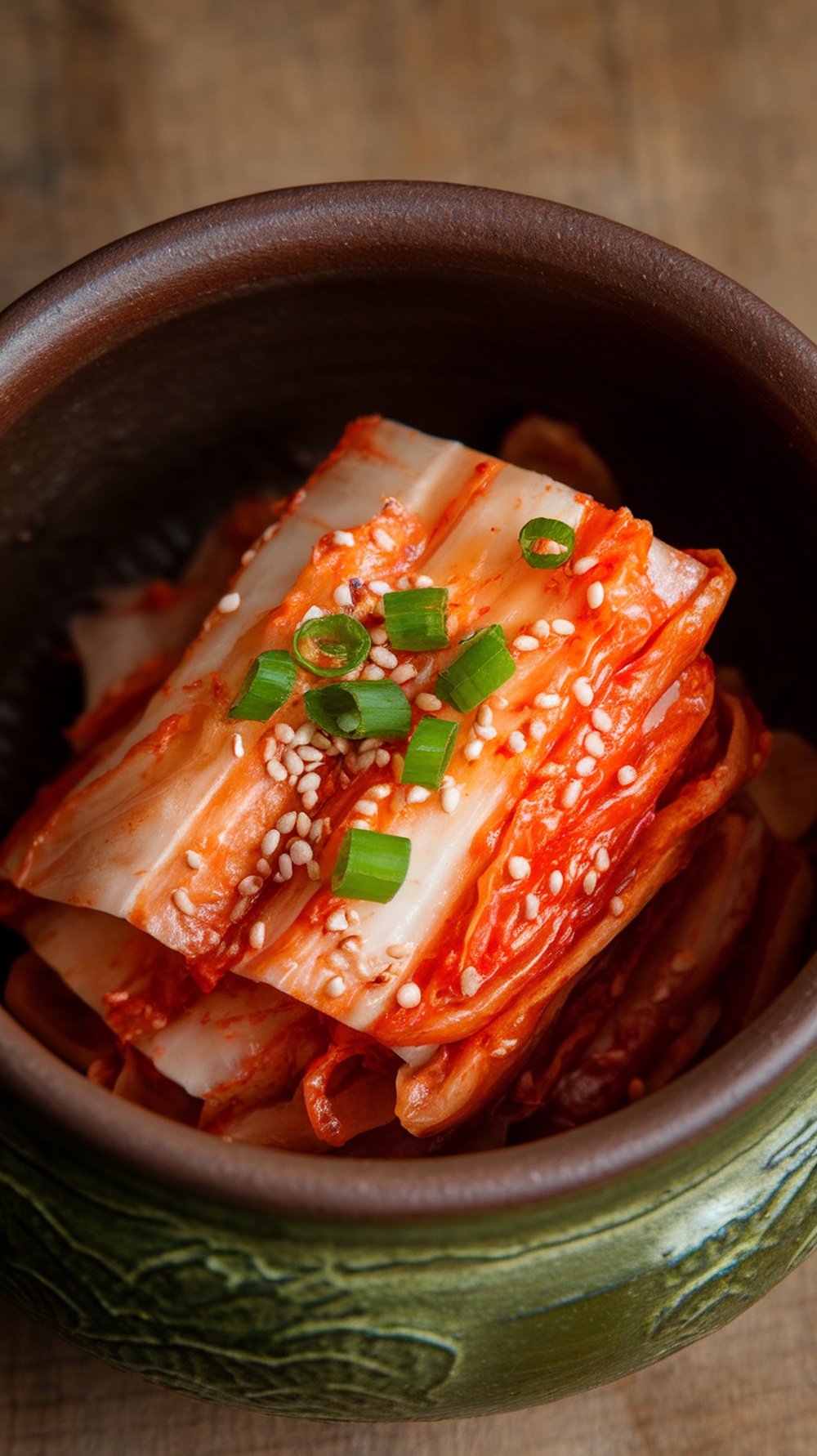
Kimchi is a staple in Korean cuisine, known for its bold flavors and health benefits. It’s primarily made from fermented vegetables, most commonly napa cabbage or radish, and seasoned with a variety of spices, including gochugaru (Korean red pepper flakes), garlic, and ginger. The taste is a delightful mix of spicy, tangy, and umami, making it a perfect accompaniment to rice and other dishes. Plus, it’s quite simple to make at home with just a bit of time and patience.
This beloved side dish, or banchan, is not just about taste; it’s also rich in probiotics, which are great for gut health. Kimchi can easily be adjusted to suit your taste preferences, whether you like it spicier or milder. Making your own kimchi allows you to experiment with different vegetables and seasonings, creating a unique flavor profile that you can enjoy with every meal.
Ready to make your own kimchi? Here’s a straightforward recipe to get you started. Grab your ingredients, and let’s bring a taste of Korea to your kitchen!
Ingredients
- 1 large napa cabbage
- 1/2 cup sea salt
- 4 cups water
- 1 tablespoon grated ginger
- 1 tablespoon minced garlic
- 1/4 cup gochugaru (Korean red pepper flakes)
- 3 tablespoons fish sauce (or soy sauce for a vegetarian option)
- 2 teaspoons sugar
- 1-2 green onions, chopped
- 1 small carrot, julienned (optional)
Instructions
- Prepare the Cabbage: Cut the napa cabbage into quarters and remove the core. Chop the quarters into bite-sized pieces. In a large bowl, dissolve the sea salt in water and soak the cabbage pieces for 2 hours, turning occasionally.
- Make the Kimchi Paste: In a separate bowl, combine the ginger, garlic, gochugaru, fish sauce, and sugar. Mix until a paste forms. Adjust the spice level by adding more gochugaru if desired.
- Combine and Pack: Drain the cabbage and rinse it under cold water to remove excess salt. Squeeze out the water and mix the cabbage with the kimchi paste, ensuring all pieces are coated. Pack the mixture tightly into a clean jar, leaving some space at the top for fermentation.
- Ferment: Seal the jar and let it sit at room temperature for 1-2 days, depending on how fermented you like it. Once it reaches your desired taste, refrigerate it to slow the fermentation process. Enjoy your homemade kimchi as a delicious side dish!
Namul (나물) – Seasoned Vegetable Side Dishes (Spinach, Bean Sprouts, Fernbrake, Etc.)

Namul is a delicious collection of seasoned vegetable side dishes that play a vital role in Korean cuisine. They are typically made with fresh ingredients like spinach, bean sprouts, or fernbrake, all tossed with various seasonings to bring out their natural flavors. The taste is often a delightful balance of savory, nutty, and slightly sweet, making them a perfect accompaniment to rice or any main dish.
One of the great things about namul is how simple it is to prepare. Most recipes require minimal cooking, allowing the natural flavors of the vegetables to shine through. The seasoning often involves staples like sesame oil, garlic, and soy sauce, which are easy to find in most kitchens. This means you can whip up a healthy and tasty side dish in no time!
If you’re looking to explore the world of banchan, namul is a fantastic starting point. These seasoned vegetables are not only nutritious but also add vibrant colors and textures to your meal. Here’s a classic recipe for seasoned spinach that you can easily make at home.
Ingredients
- 1 pound fresh spinach
- 2 tablespoons sesame oil
- 1 tablespoon soy sauce
- 2 cloves garlic, minced
- 1 teaspoon sesame seeds
- Salt to taste
Instructions
- Blanch the Spinach: Bring a pot of water to a boil. Add the fresh spinach and blanch for about 1-2 minutes until wilted. Drain and cool under cold water to stop the cooking process.
- Season the Spinach: Once cooled, squeeze out excess water from the spinach and chop it into bite-sized pieces. In a bowl, mix the spinach with sesame oil, soy sauce, minced garlic, and salt to taste.
- Garnish and Serve: Sprinkle sesame seeds on top before serving. Enjoy your namul as a tasty side dish with rice or any meal!
Jorim (조림) – Braised Dishes (E.G., Soy-Braised Potatoes, Tofu, Or Fish)
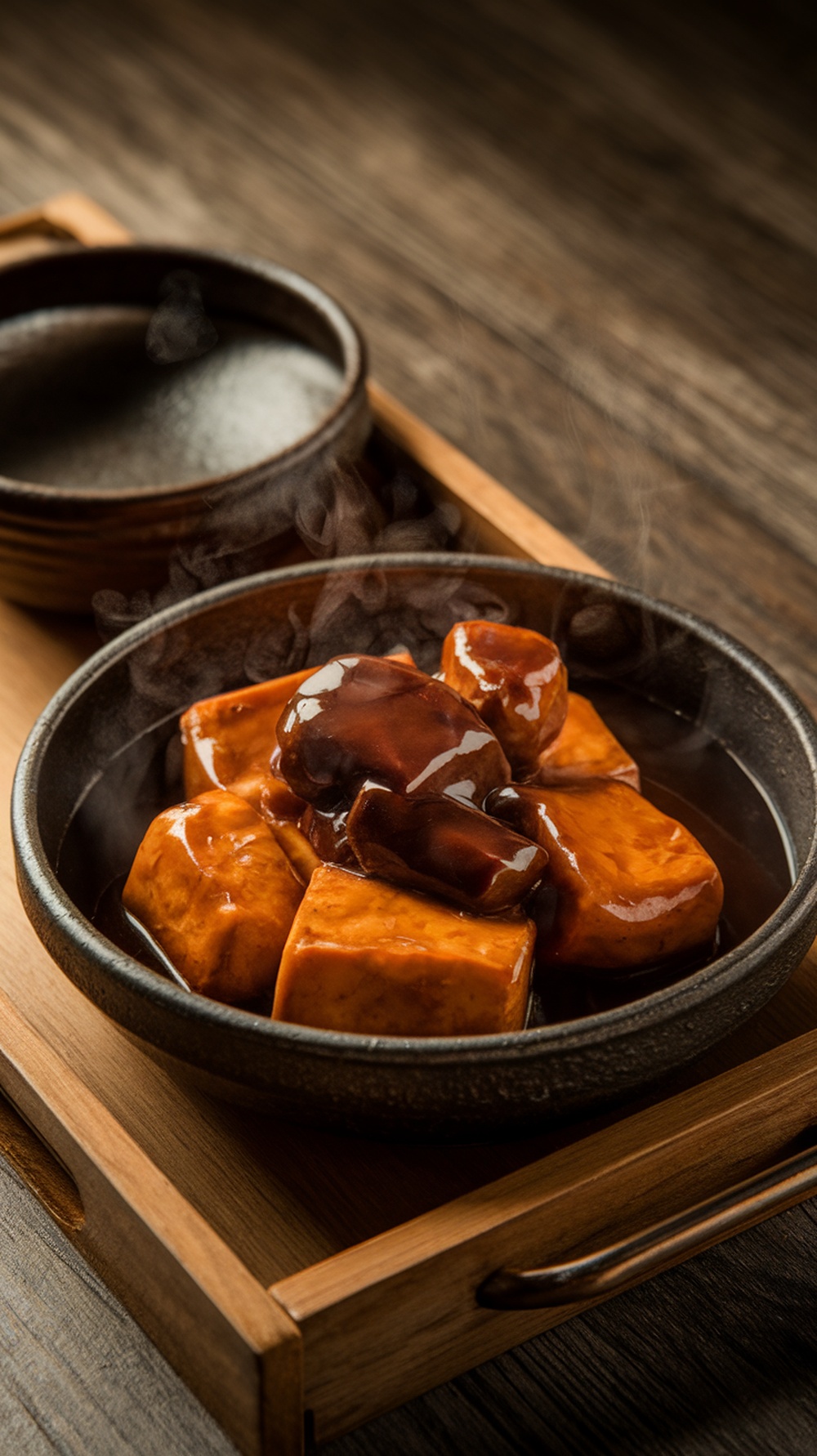
Jorim, the Korean term for braised dishes, brings a delightful depth of flavor to your table. These dishes are typically cooked slowly in a savory sauce made from soy sauce, garlic, and a touch of sweetness, resulting in tender ingredients infused with rich taste. Whether you’re braising potatoes, tofu, or fish, the result is always satisfying and comforting.
The beauty of jorim lies in its simplicity. With just a few key ingredients, you can create a side dish that complements a variety of meals. The balance of salty and sweet notes makes it a versatile addition to any Korean meal, alongside banchan, which are the traditional side dishes served during a meal.
One popular jorim recipe is soy-braised potatoes, which are soft, sweet, and perfect for sharing. Ideal for weeknight dinners or special occasions, the dish is not only easy to prepare, but it also comes together in under an hour. Here’s how you can make your own soy-braised potatoes at home!
Ingredients
- 4 medium potatoes, peeled and cut into chunks
- 1/4 cup soy sauce
- 2 tablespoons sugar
- 2 tablespoons vegetable oil
- 2 cloves garlic, minced
- 1/2 cup water
- 1 teaspoon sesame oil
- Sesame seeds for garnish
Instructions
- In a pot, heat the vegetable oil over medium heat. Add the minced garlic and sauté until fragrant.
- Add the potato chunks to the pot, followed by soy sauce, sugar, and water. Stir everything together.
- Cover and let it simmer for about 20-25 minutes until the potatoes are tender. Drizzle with sesame oil and sprinkle sesame seeds before serving.
Bokkeum (볶음) – Stir-Fried Dishes (E.G., Stir-Fried Anchovies Or Dried Squid)
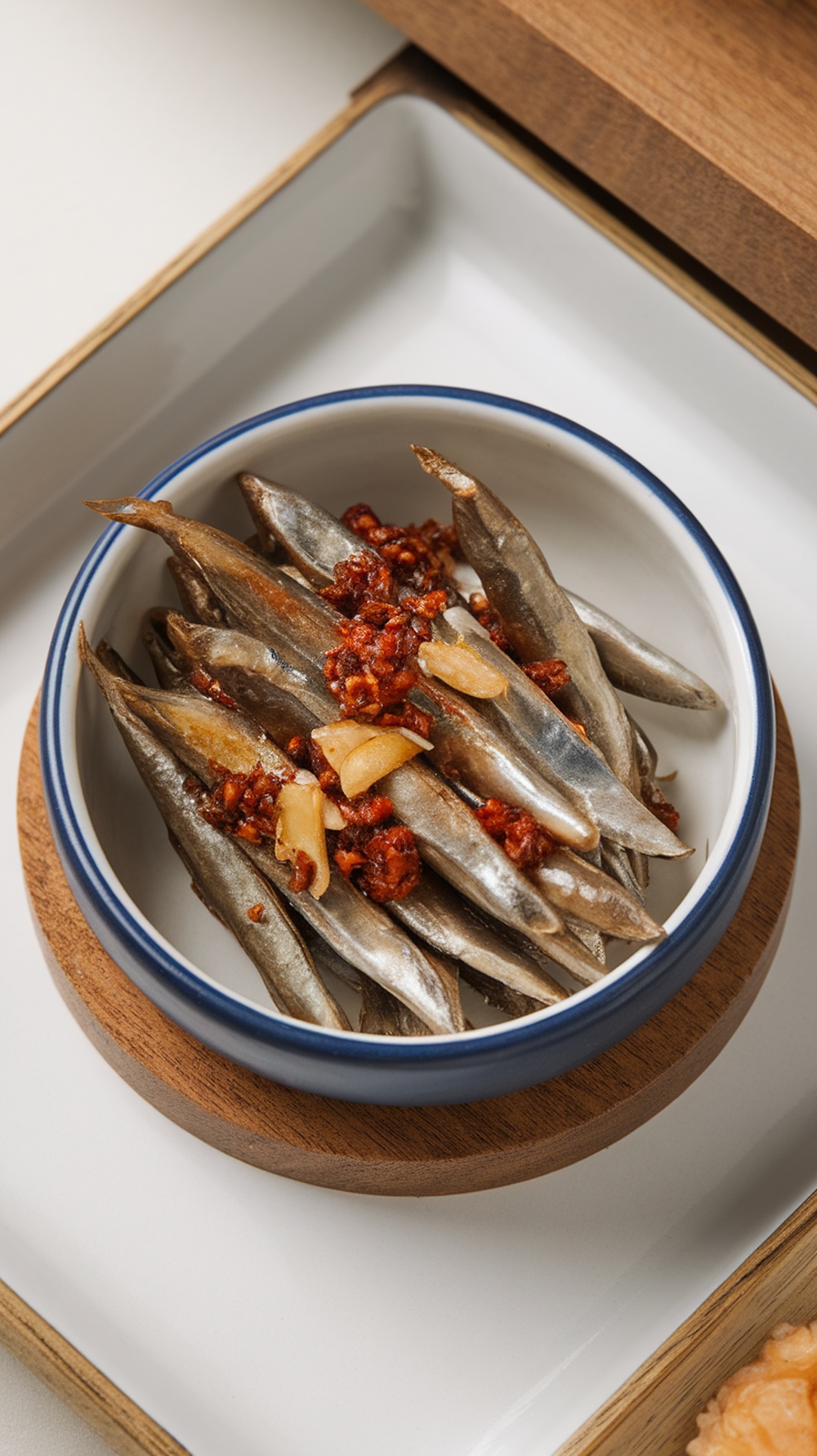
Bokkeum, or stir-fried dishes, are a staple in the world of banchan. These dishes often feature ingredients like dried anchovies or squid, seasoned and cooked to bring out their natural flavors. The result is a delightful combination of salty, savory, and slightly sweet tastes that pair perfectly with rice. Plus, making bokkeum is relatively simple, requiring just a few ingredients and quick cooking techniques.
The essence of bokkeum lies in its versatility. You can customize the dish based on your preferences or what’s available in your pantry. Whether you opt for anchovies or dried squid, the preparation remains straightforward: sautéing with garlic, soy sauce, and a hint of sweetness creates a harmonious blend that enhances each bite. It’s no wonder this dish has become a beloved component of Korean meals.
For those eager to try their hand at making bokkeum, here’s a quick recipe to get you started. Enjoy the process and savor the delicious results as part of your banchan spread!
Ingredients
- 1 cup dried anchovies
- 2 tablespoons vegetable oil
- 3 cloves garlic, minced
- 2 tablespoons soy sauce
- 1 tablespoon sugar
- 1 teaspoon sesame oil
- 1 tablespoon sesame seeds
- Chopped green onions for garnish
Instructions
- Heat the vegetable oil in a pan over medium heat. Add the minced garlic and sauté until fragrant.
- Add the dried anchovies to the pan and stir-fry for about 2-3 minutes until they turn golden brown.
- Pour in the soy sauce and sugar, stirring well to coat the anchovies. Cook for another 2 minutes until the mixture thickens slightly.
- Drizzle sesame oil over the dish and sprinkle with sesame seeds. Toss everything together for a final mix.
- Garnish with chopped green onions before serving. Enjoy your homemade bokkeum as a delicious side dish!
Jeon (전) – Korean-Style Pancakes Made With Vegetables, Meat, Or Seafood
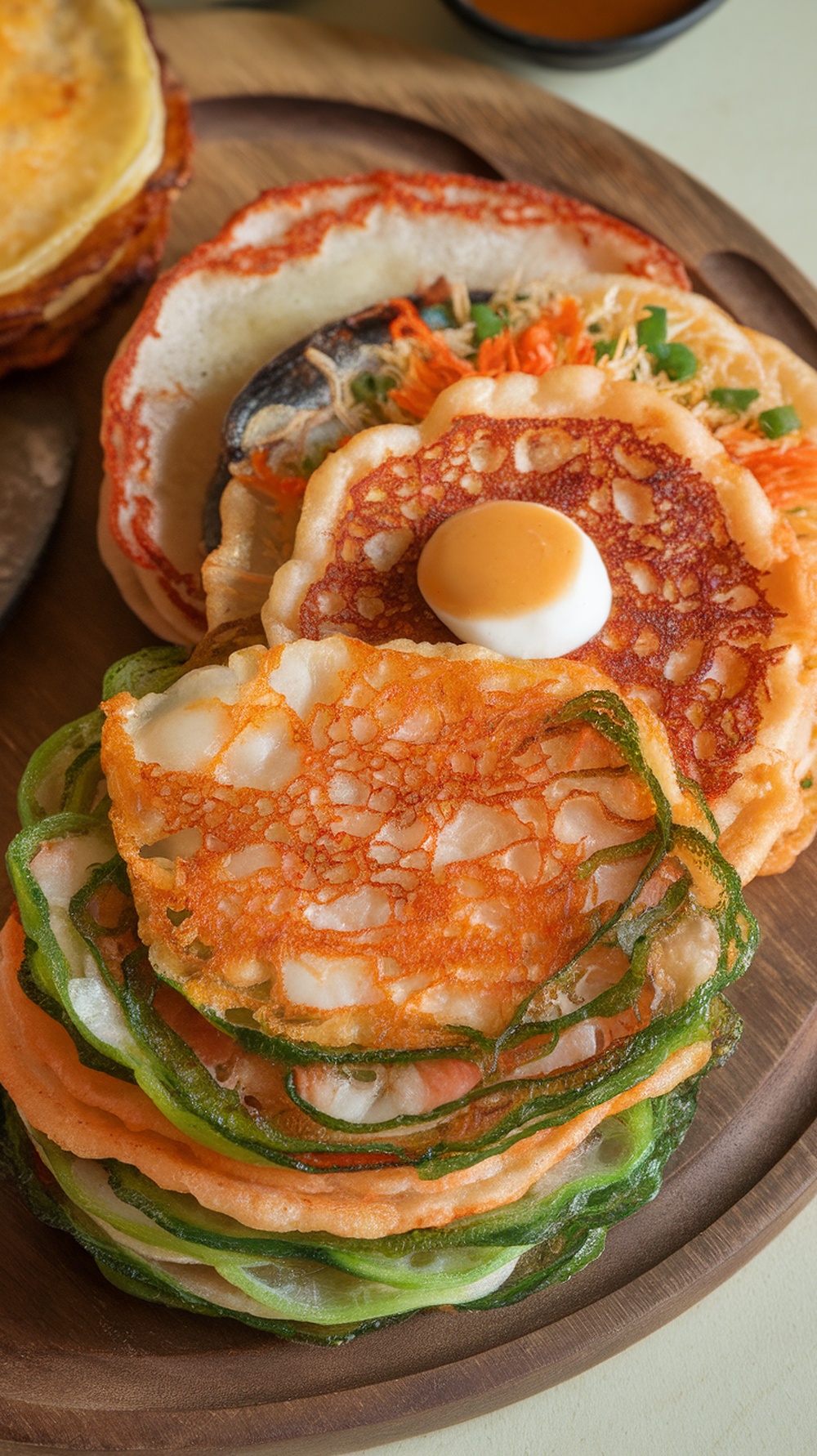
Jeon, or Korean-style pancakes, are a delightful addition to any meal. These pancakes are packed with flavor and can be made with a variety of ingredients such as vegetables, meat, or seafood. Their crispy exterior and soft interior make them irresistible. Plus, they are quite simple to prepare, making them a favorite for both novice cooks and seasoned chefs alike.
These pancakes are not just a treat for the taste buds, but they also bring a colorful presentation to the table. Each bite offers a satisfying crunch, followed by the tender filling that bursts with flavor. Typically served as a side dish or banchan, jeon can elevate any Korean meal, making it feel special and complete.
If you’re looking to impress your family and friends, making jeon is a great way to do it. They are versatile enough to suit various tastes and dietary preferences. So, gather your ingredients, and get ready to enjoy a classic Korean dish!
Ingredients
- 1 cup all-purpose flour
- 1/2 cup water
- 1/4 teaspoon salt
- 1 cup mixed vegetables (like zucchini, carrots, and green onions)
- 1/2 cup seafood (like shrimp or squid) or sliced meat (like beef or pork)
- Vegetable oil for frying
Instructions
- Prepare the Batter: In a bowl, mix the flour, water, and salt until smooth. Adjust the consistency if needed by adding a bit more water or flour.
- Add Fillings: Stir in the mixed vegetables and your choice of seafood or meat into the batter, ensuring they are evenly distributed.
- Cook the Pancakes: Heat a non-stick frying pan over medium heat and add a generous amount of vegetable oil. Pour a ladleful of the batter into the pan, spreading it out into a circular shape. Fry for about 3-4 minutes on each side until golden brown.
- Serve: Once cooked, transfer the pancakes to a paper towel-lined plate to absorb excess oil. Serve hot, preferably with a dipping sauce, and enjoy!
Muchim (무침) – Mixed And Seasoned Dishes, Often Spicy Or Vinegary
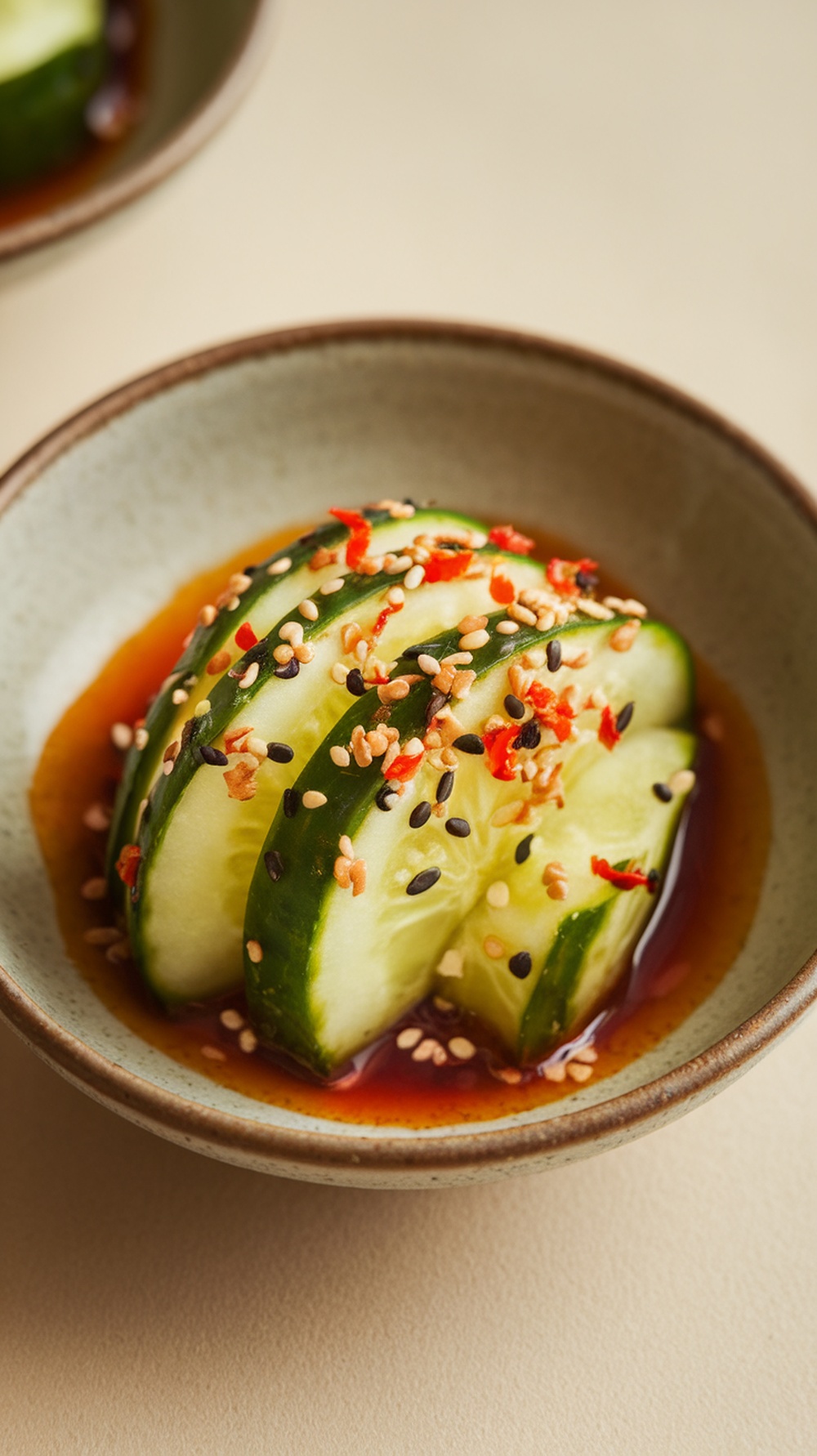
Muchim is a vibrant category of banchan that brings a spicy or vinegary kick to your meal. These mixed and seasoned dishes are often made with fresh vegetables and a variety of seasonings, making them both delicious and nutritious. They are simple to prepare, allowing you to whip up a delightful side dish in no time.
The combination of textures and flavors in muchim highlights the freshness of ingredients while adding an exciting twist. Whether enjoyed with rice or as a standalone snack, these dishes often feature a balance of heat and tanginess that leaves your taste buds tingling. Plus, the colorful presentation makes them a feast for the eyes!
If you’re eager to try your hand at making muchim, here’s a quick and easy recipe for Spicy Cucumber Muchim. It’s refreshing, spicy, and pairs perfectly with any Korean meal.
Ingredients
- 2 medium cucumbers
- 1 tablespoon salt
- 2 tablespoons gochugaru (Korean red pepper flakes)
- 1 tablespoon soy sauce
- 1 tablespoon vinegar (rice or apple cider)
- 1 teaspoon sesame oil
- 1 teaspoon sugar
- 1 tablespoon sesame seeds
- Sliced green onions (optional)
Instructions
- Prepare the Cucumbers: Slice the cucumbers into thin rounds or half-moons. Sprinkle salt over them and let sit for about 10 minutes to draw out the moisture.
- Make the Dressing: In a bowl, combine gochugaru, soy sauce, vinegar, sesame oil, and sugar. Stir until well mixed.
- Toss It Together: Rinse the cucumbers under cold water to remove excess salt. Drain and add to the dressing. Toss to coat evenly, and top with sesame seeds and green onions before serving.
Jjim (찜) – Steamed Or Boiled Dishes (E.G., Egg Jjim, Braised Short Ribs)
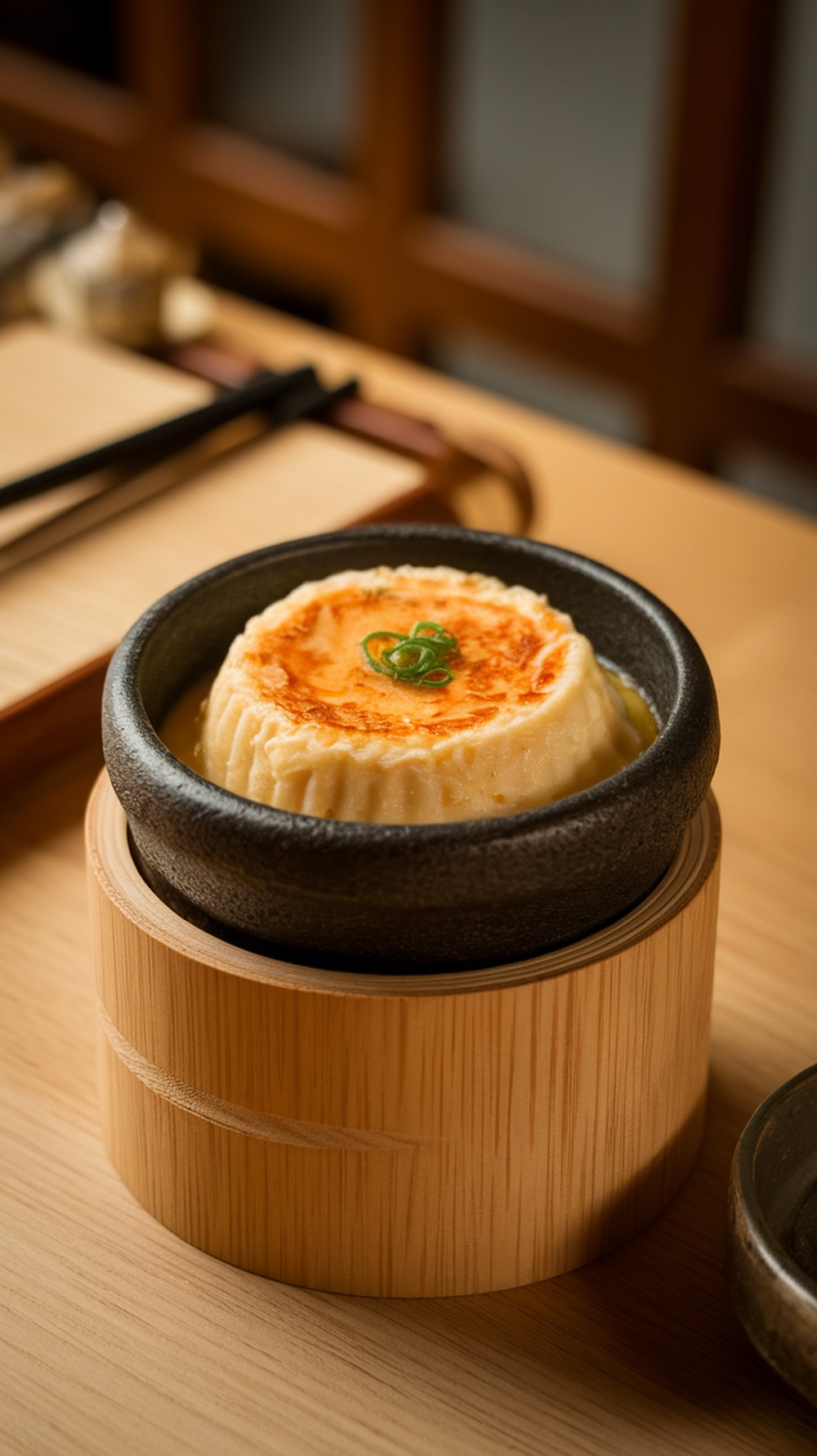
Jjim refers to a variety of steamed or boiled dishes in Korean cuisine that can truly elevate any meal. These dishes are often rich and savory, making them perfect as side dishes, or banchan, to accompany rice and other main courses. The steaming process keeps the ingredients tender while enhancing their natural flavors, resulting in a comforting and delicious experience.
One of the most popular forms of jjim is egg jjim, a fluffy and creamy steamed egg custard that is both light and filling. It’s a delightful way to enjoy eggs, infused with umami flavors, and can easily be prepared at home. Braised short ribs, on the other hand, offer a heartier option, where tender beef is cooked slowly to soak up a rich marinade of soy sauce, garlic, and spices, creating a melt-in-your-mouth texture that’s irresistible.
These dishes are simple enough for beginners and rewarding for experienced cooks. They can be made with various ingredients, allowing for creativity based on personal taste. Whether you choose the delicate egg jjim or the robust braised short ribs, both options bring warmth and satisfaction to the dining table.
Ingredients
- 4 large eggs
- 1 cup water or broth
- 1 teaspoon soy sauce
- 1/2 teaspoon sesame oil
- 1/4 teaspoon salt
- 1 green onion, chopped (for garnish)
Instructions
- In a mixing bowl, whisk together the eggs, water or broth, soy sauce, sesame oil, and salt until well combined.
- Pour the egg mixture into a heatproof dish and cover it with aluminum foil to prevent water from dripping in.
- Set up a steamer on the stove, and once the water is boiling, add the covered dish. Steam for about 15-20 minutes, or until the egg is set and fluffy.
- Carefully remove the dish from the steamer and let it cool slightly. Garnish with chopped green onions before serving.
Pickled Banchan – Lightly Pickled Vegetables Such As Cucumbers Or Radishes
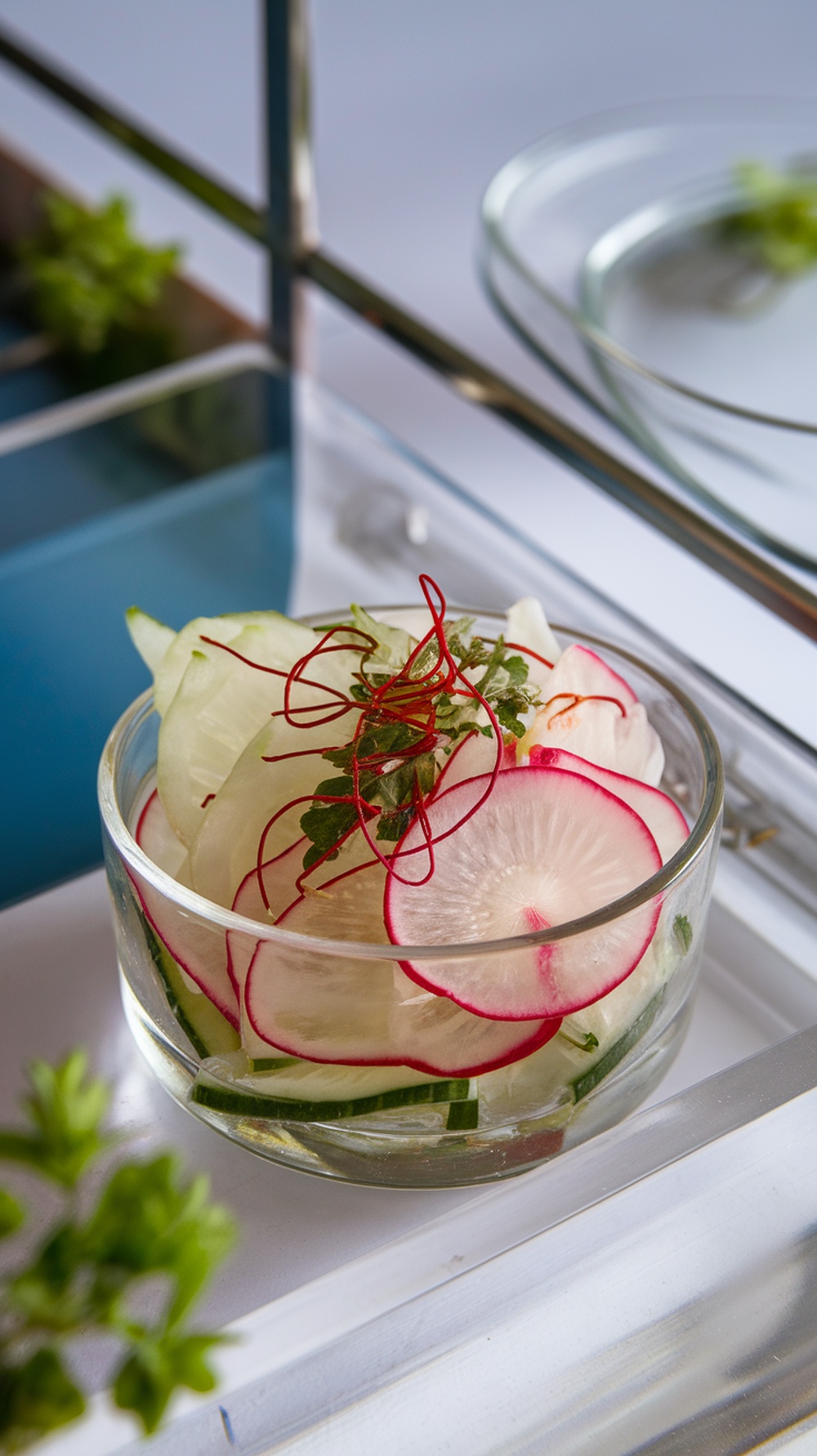
Pickled banchan are a staple in Korean cuisine, offering a refreshing balance to richer dishes. These lightly pickled vegetables, like cucumbers and radishes, provide a crisp texture and a tangy flavor that can brighten any meal. Making them at home is simple and requires just a few ingredients, making it easy to enjoy this traditional side dish anytime.
The process generally involves slicing the vegetables and marinating them in a mixture of vinegar, sugar, and salt. This creates a delightful contrast to savory main dishes, enhancing the overall dining experience. Plus, the vibrant colors of the pickled vegetables add visual appeal to the table.
Here’s a quick recipe for making your own pickled cucumbers:
Ingredients
- 2 cups cucumbers, thinly sliced
- 1/2 cup rice vinegar
- 1/4 cup sugar
- 1 teaspoon salt
- 1/2 teaspoon sesame oil
- 1 teaspoon chili flakes (optional)
Instructions
- Mix the vinegar, sugar, salt, sesame oil, and chili flakes in a bowl until the sugar dissolves.
- Add the sliced cucumbers to the marinade and toss to coat evenly.
- Let it sit for at least 30 minutes in the refrigerator before serving for the best flavor.
Seafood Banchan – Small Servings Of Marinated Or Stir-Fried Seafood
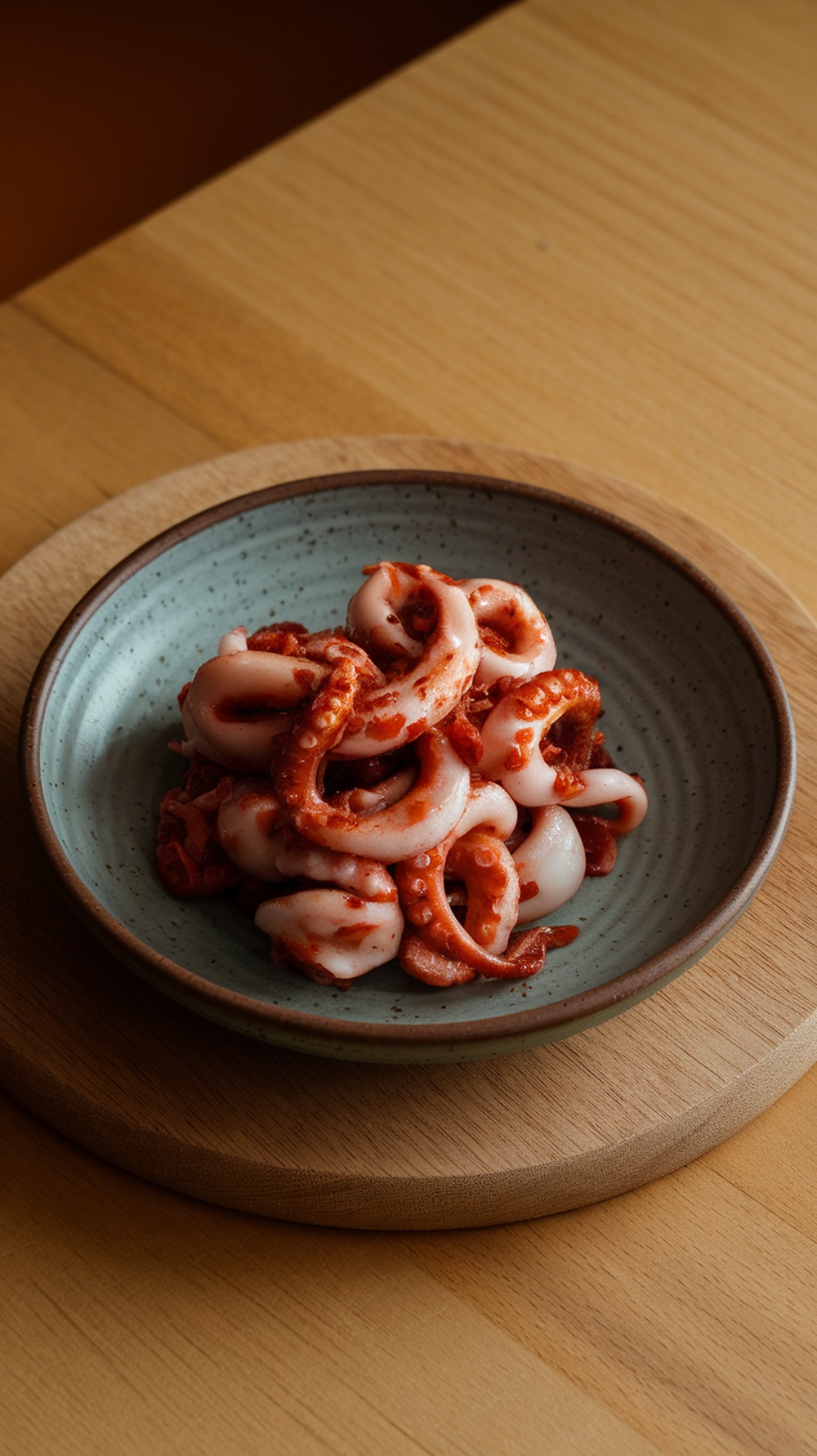
Seafood banchan includes a variety of small dishes featuring marinated or stir-fried seafood. These side dishes are packed with flavor and often highlight the natural taste of the ingredients. Whether it’s spicy, tangy, or savory, each bite brings a burst of umami that pairs perfectly with rice.
Making seafood banchan at home is quite simple. With just a few fresh ingredients and some common seasonings, you can whip up delicious dishes that are perfect for sharing. These small servings not only make your meal vibrant but also allow for a delightful tasting experience.
One popular seafood banchan is spicy marinated octopus, which is both refreshing and slightly tangy. This dish is a hit at any Korean table and is sure to impress your guests. Ready to make your own? Here’s a quick recipe!
Ingredients
- 1 pound baby octopus, cleaned
- 1/4 cup gochugaru (Korean red pepper flakes)
- 2 tablespoons soy sauce
- 1 tablespoon sesame oil
- 1 tablespoon rice vinegar
- 1 teaspoon sugar
- 2 cloves garlic, minced
- 1 green onion, finely chopped
Instructions
- Prepare the Octopus: Boil a pot of water and cook the octopus for about 2-3 minutes until tender. Drain and let cool.
- Make the Marinade: In a bowl, mix gochugaru, soy sauce, sesame oil, rice vinegar, sugar, and minced garlic until well combined.
- Combine: Cut the octopus into bite-sized pieces and add to the marinade. Mix well and let it marinate in the fridge for at least 30 minutes.
- Serve: Garnish with chopped green onions and enjoy as a side dish with rice!
Tofu-Based Banchan – Seasoned Or Pan-Fried Tofu Variations
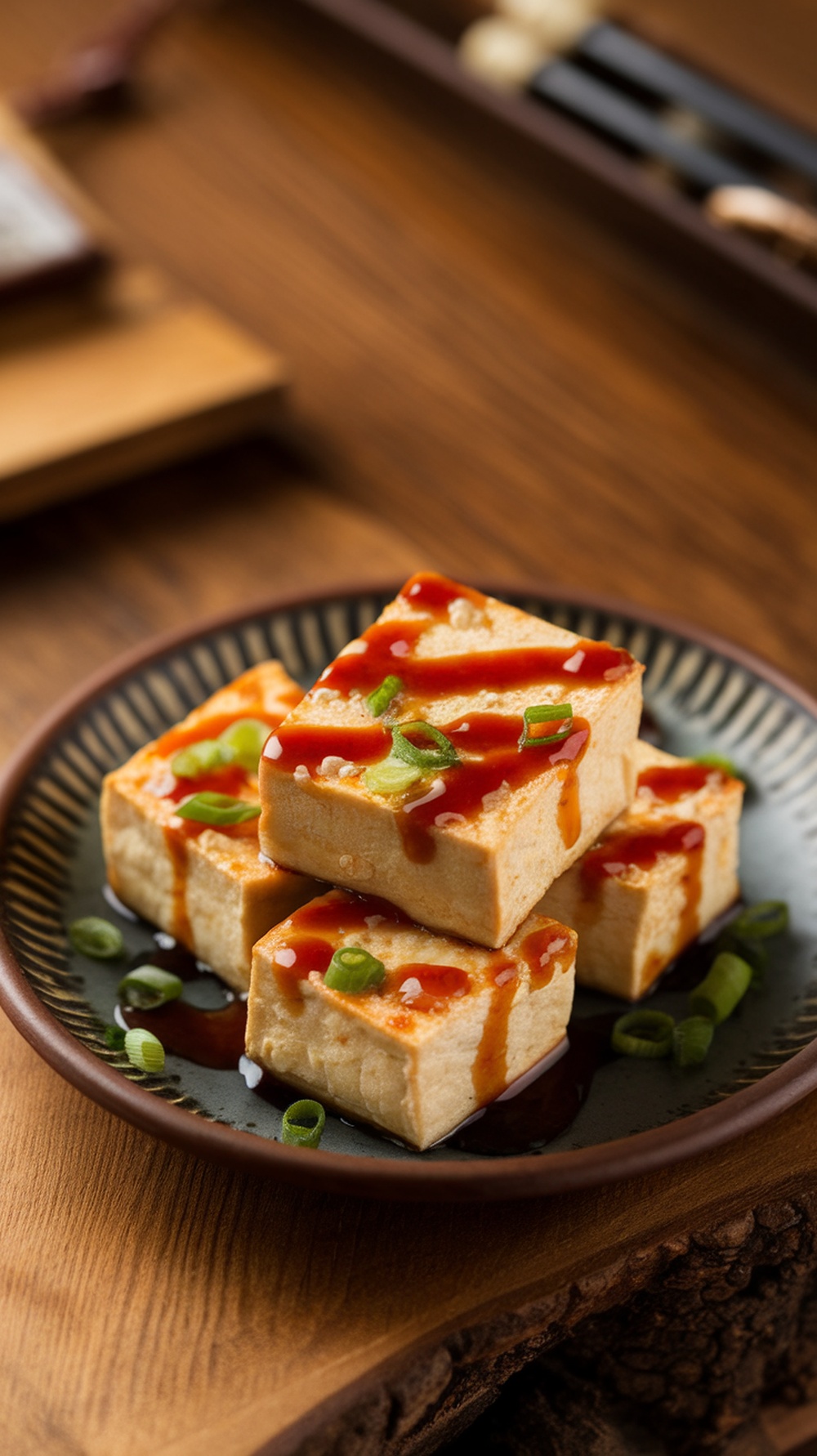
Tofu is a staple in Korean cooking, especially when it comes to banchan, the delightful side dishes served with meals. Seasoned or pan-fried tofu offers a simple yet satisfying way to introduce this ingredient to your table. With its mild flavor and versatile texture, tofu can soak up various seasonings, making it a perfect canvas for delicious combinations.
When prepared as banchan, tofu is typically cut into bite-sized pieces and can be seasoned simply with soy sauce, sesame oil, and green onions or pan-fried to create a crispy exterior while keeping the inside soft and tender. This dish not only complements main courses but also stands alone as a nutritious snack.
Whether you choose to season it or fry it, tofu banchan is easy to prepare and can be ready in no time. It’s a great way to enjoy a healthy side while exploring the flavors of Korean cuisine. Here’s a simple recipe to get you started!
Ingredients
- 1 block firm tofu
- 2 tablespoons soy sauce
- 1 tablespoon sesame oil
- 1 teaspoon garlic, minced
- 1 green onion, chopped
- 1 tablespoon gochujang (Korean chili paste, optional)
- Oil for frying
- Sesame seeds for garnish
Instructions
- Prepare the Tofu: Drain the tofu and pat it dry with a paper towel. Cut it into cubes or slices, depending on your preference.
- Season the Tofu: In a bowl, mix soy sauce, sesame oil, minced garlic, and gochujang. Add the tofu pieces and gently toss to coat.
- Fry the Tofu: Heat oil in a non-stick pan over medium-high heat. Add the tofu and cook until golden brown on all sides, about 5-7 minutes. Remove from the pan and sprinkle with chopped green onion and sesame seeds before serving.
Egg Dishes – Rolled Omelets (Gyeran-Mari) Or Steamed Eggs

Gyeran-mari, or rolled omelets, is a delightful and versatile dish found in many Korean households. This simple yet flavorful dish is made by whisking eggs and cooking them into a thin layer that is then rolled up. The result is a soft, fluffy omelet that can be enjoyed hot or cold, making it a fantastic addition to any meal. The taste is mild, often enhanced with a dash of soy sauce or other seasonings, perfect as a side dish or banchan.
Making gyeran-mari is straightforward and doesn’t take much time, even for beginners. The ingredients are minimal, usually just eggs, salt, and a splash of water or milk for added fluffiness. You can even customize it by adding vegetables, cheese, or meats, turning it into a delicious meal on its own.
If you’re interested in trying your hand at this Korean classic, here’s a simple recipe to get you started:
Ingredients
- 4 large eggs
- 1 tablespoon milk or water
- 1/2 teaspoon salt
- 1 tablespoon vegetable oil
- Optional: chopped green onions, bell peppers, or ham for filling
Instructions
- In a bowl, whisk together the eggs, milk or water, and salt until well combined.
- Heat a non-stick skillet over medium heat and add the vegetable oil.
- Pour in a portion of the egg mixture to cover the bottom of the skillet. Cook until the edges set but the center is still slightly runny.
- Using a spatula, gently roll the cooked egg toward the center of the skillet.
- Add more egg mixture to the pan, allowing it to flow under the rolled omelet. Cook until set, then roll again, repeating this until all the egg mixture is used.
- Once fully cooked, remove from the skillet and let it cool slightly before slicing into bite-sized pieces. Serve with soy sauce for dipping.
Root Vegetables – Seasoned Lotus Root, Burdock, Or Sweet Potatoes
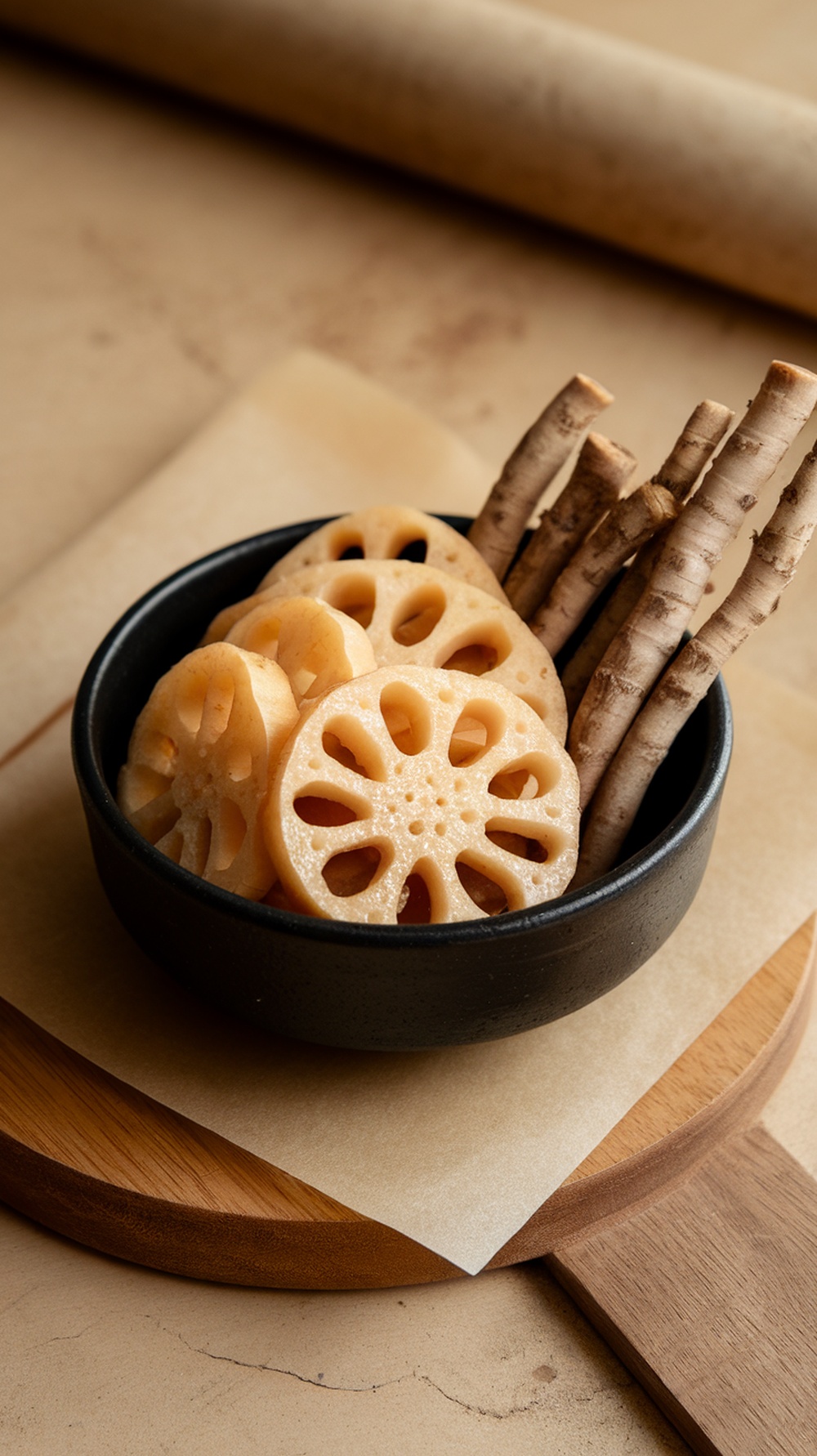
Root vegetables are a staple in Korean cuisine, and they shine in various forms of banchan, or side dishes. Seasoned lotus root, burdock, and sweet potatoes offer a delightful mix of textures and flavors. Each vegetable brings its unique taste, from the crunchy and slightly sweet lotus root to the earthy and nutty notes of burdock. These dishes are generally simple to prepare, making them perfect for home cooks looking to add variety to their meals.
The preparation typically involves boiling or steaming the vegetables until tender, followed by a light seasoning with soy sauce, sesame oil, and a sprinkle of sesame seeds. This method highlights the natural flavors and provides a healthy addition to any meal. These side dishes not only complement main dishes but also serve as nutritious snacks.
Now, let’s dive into a delicious recipe for seasoned lotus root. Enjoy creating this easy and flavorful side dish that will impress your family and friends!
Ingredients
- 1 lotus root, peeled and sliced
- 3 tablespoons soy sauce
- 1 tablespoon sesame oil
- 1 tablespoon rice vinegar
- 1 teaspoon sugar
- 1 teaspoon crushed garlic
- 1 tablespoon sesame seeds
- Chopped green onions for garnish
Instructions
- Boil the lotus root slices in water for about 10 minutes until tender. Drain and let cool.
- In a bowl, mix together soy sauce, sesame oil, rice vinegar, sugar, and crushed garlic.
- Add the cooled lotus root to the bowl and toss until well coated in the seasoning.
- Let it marinate for at least 30 minutes in the refrigerator.
- Before serving, sprinkle with sesame seeds and chopped green onions for garnish.
Beans And Legumes – Sweet Black Beans Or Soybeans
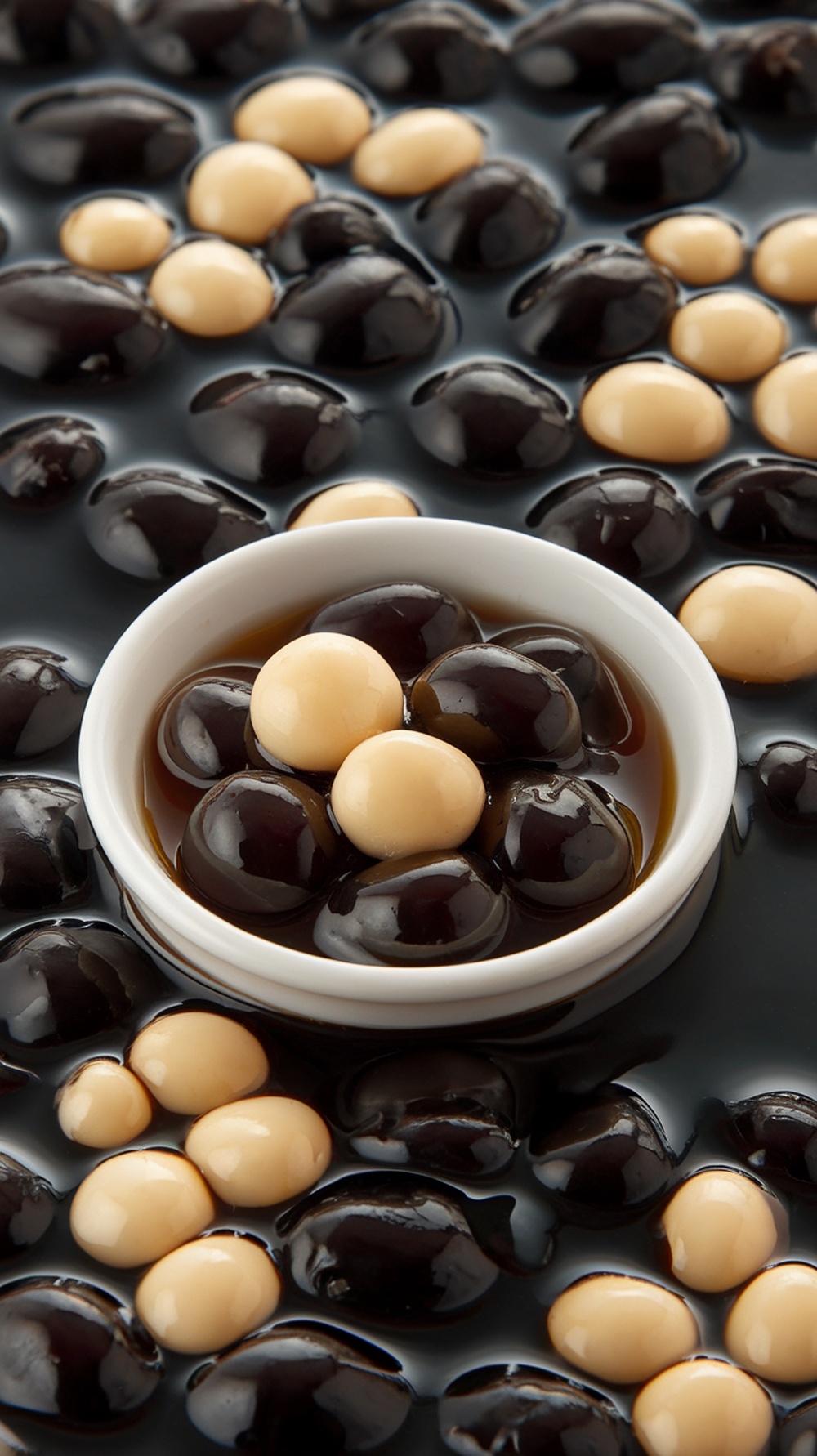
Beans and legumes are a staple in Korean cuisine, often served as banchan, or side dishes. Sweet black beans, known as ‘heuk-guru’, and soybeans play a significant role in adding depth and flavor to meals. These simple yet satisfying dishes are not only delicious but also easy to prepare, making them a favorite among home cooks.
When you take a bite, expect a delightful balance of sweetness and a slightly nutty flavor. The texture is tender yet firm, adding an enjoyable contrast to the meal. Whether enjoyed cold or warm, they offer a comforting and hearty taste, perfect for complementing a variety of main dishes.
Let’s dive into a quick and easy recipe for sweet black beans that captures the essence of traditional Korean banchan. This dish can be prepared in under 30 minutes, making it an excellent addition to any meal.
Ingredients
- 1 cup dried black beans
- 4 cups water
- 1/4 cup sugar
- 2 tablespoons soy sauce
- 1 tablespoon sesame oil
- 1 teaspoon garlic, minced
- 1/2 teaspoon salt
- 1 tablespoon sesame seeds (optional, for garnish)
Instructions
- Rinse the black beans under running water and soak them in water overnight. Drain and rinse again.
- In a pot, combine the soaked beans and 4 cups of fresh water. Bring to a boil and then reduce heat to simmer for about 30 minutes or until tender.
- Once cooked, stir in sugar, soy sauce, sesame oil, garlic, and salt. Cook for an additional 5 minutes, allowing the flavors to meld. Garnish with sesame seeds if desired before serving.
Nuts And Seeds – Often Glazed Or Roasted For A Crunchy Addition
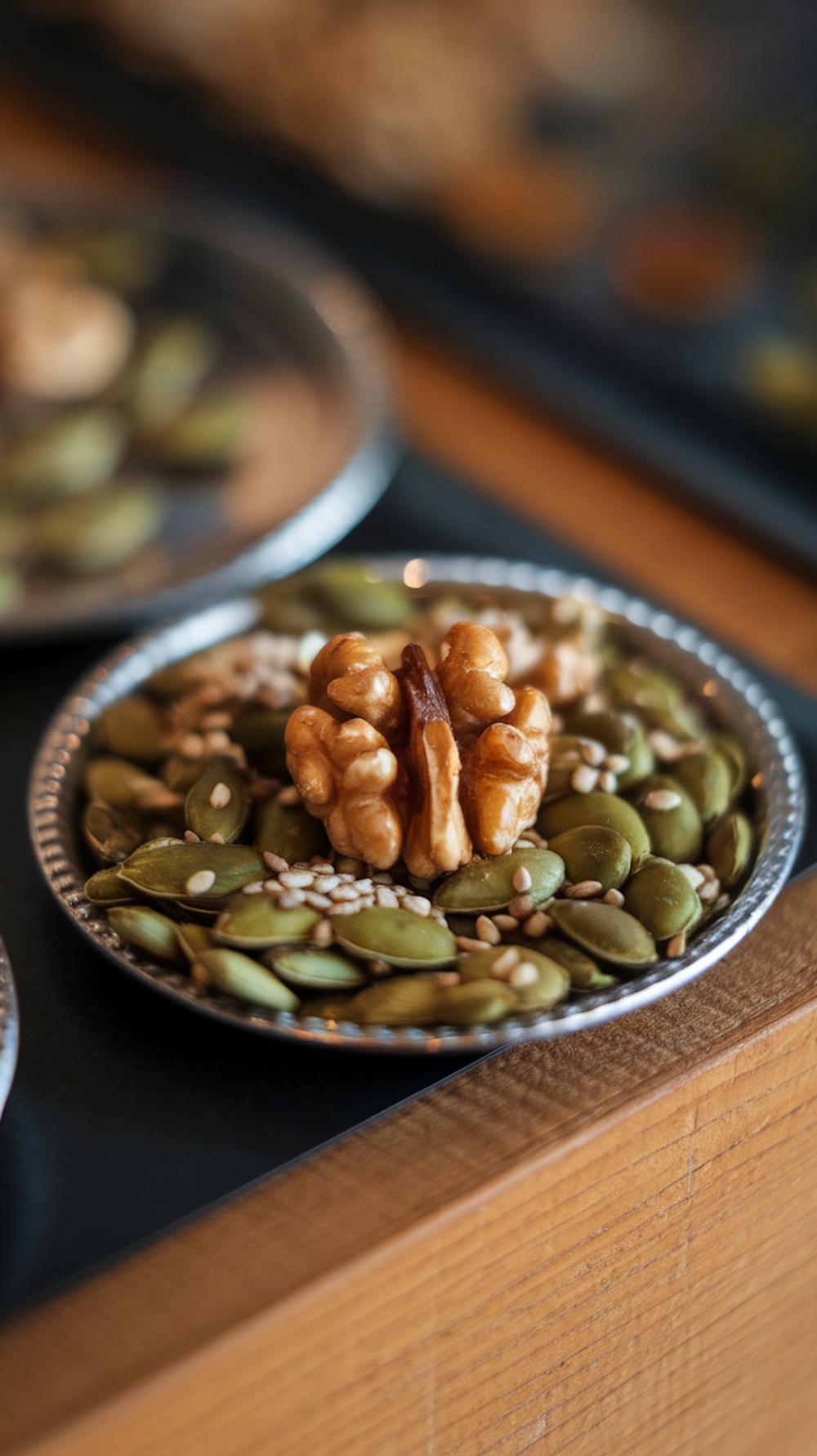
Nuts and seeds play a delightful role in Korean banchan, adding a crunchy texture and rich flavor to meals. Often glazed or roasted, these ingredients bring a wonderful nutty taste that complements the array of side dishes served alongside rice and main courses. Simple to prepare, they require minimal ingredients and can be customized to suit your taste.
The sweetness of the glaze contrasts beautifully with the natural saltiness of the nuts and seeds, creating a balanced snack or side dish that enhances any meal. Popular choices include pumpkin seeds, walnuts, and sesame seeds, each contributing unique flavors and textures. These crunchy bites are not only delicious but also packed with nutrients, making them a smart addition to any diet.
If you’re ready to give it a try, here’s a quick recipe for roasted pumpkin seeds with a sweet glaze. They’re perfect as a standalone snack or as part of your banchan spread!
Ingredients
- 1 cup pumpkin seeds
- 2 tablespoons honey or maple syrup
- 1 tablespoon soy sauce
- 1 teaspoon sesame oil
- 1/2 teaspoon garlic powder
- 1/2 teaspoon salt
- 1 tablespoon sesame seeds (optional)
Instructions
- Preheat the oven to 350°F (175°C).
- In a mixing bowl, combine the pumpkin seeds, honey or maple syrup, soy sauce, sesame oil, garlic powder, and salt. Mix well until the seeds are evenly coated.
- Spread the mixture onto a baking sheet in a single layer. Bake for about 15-20 minutes, stirring occasionally, until golden brown and fragrant.
- If using, sprinkle sesame seeds over the top during the last 5 minutes of baking.
- Let cool before serving. Enjoy as a crunchy banchan or snack!
Fusion Or Modern Banchan – Creative Takes Like Cheesy Kimchi Or Mayo-Based Salads
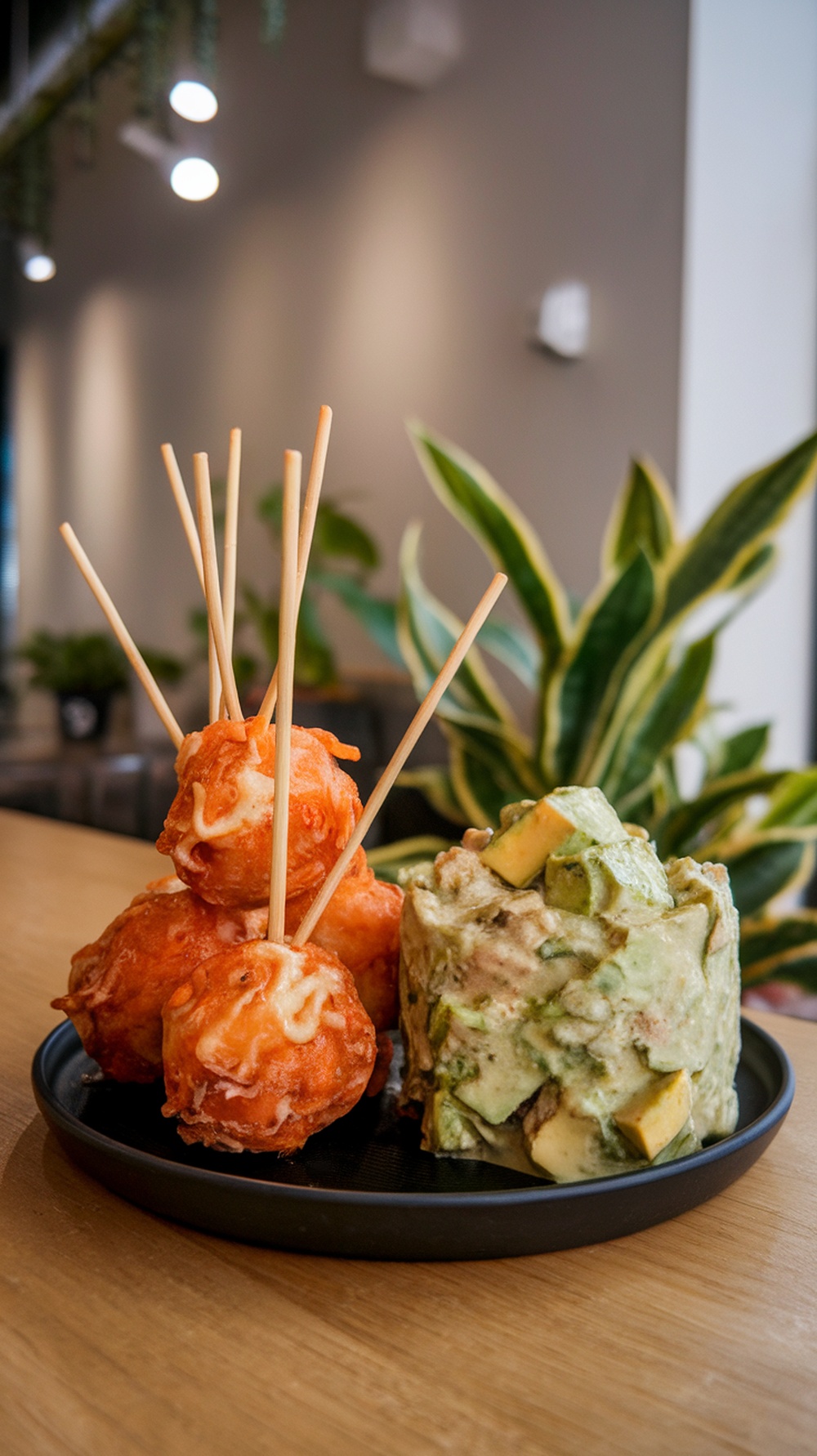
Banchan, the beloved side dishes of Korean cuisine, have seen exciting twists in modern cooking. From cheesy kimchi to mayo-based salads, these creative takes bring a fun and fresh perspective to traditional flavors. These dishes often blend familiar Korean elements with global ingredients, making them appealing to a wider audience.
The taste of modern banchan can be a delightful surprise. Imagine the tangy kick of kimchi paired with creamy cheese, or a classic potato salad infused with spicy gochujang. These fusion recipes not only tantalize the taste buds but also provide an easy way to introduce banchan to anyone who’s a little hesitant to try traditional Korean dishes.
What’s fantastic about these modern banchan is their simplicity. They often require minimal cooking skills and can be whipped up quickly, making them perfect for a casual meal or a potluck gathering. For anyone looking to try their hand at a unique banchan, here’s a recipe that combines the classic elements with a fresh twist.
Ingredients
- 1 cup kimchi, chopped
- 1 cup shredded mozzarella cheese
- 1 tablespoon mayonnaise
- 1 tablespoon gochujang (Korean chili paste)
- 1 cup cooked potatoes, diced
- 1 green onion, finely chopped
- Salt and pepper to taste
Instructions
- Mix the kimchi and mozzarella cheese in a bowl until combined.
- Add mayonnaise and gochujang, stirring until everything is well coated.
- Fold in the diced potatoes and green onion, seasoning with salt and pepper as desired.
- Serve chilled or at room temperature as a delightful side dish.
Historical Roots Of Banchan
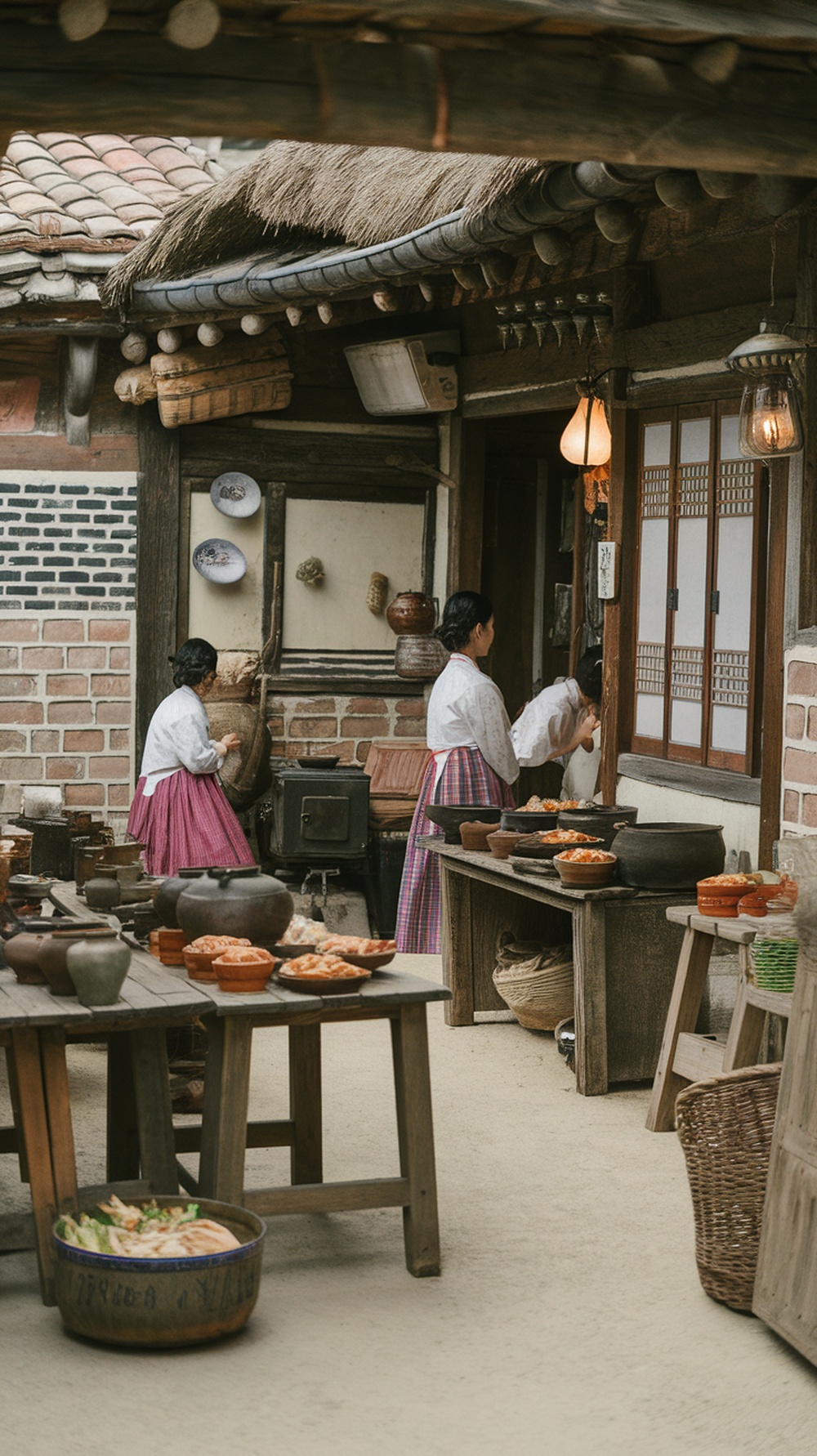
The history of banchan can be traced back to ancient Korea, where meals were traditionally served in a communal style. During the Joseon Dynasty (1392-1897), the concept of banchan was deeply ingrained in Korean dining etiquette. The meal structure was designed to reflect the Korean principles of balance and harmony, both in terms of flavor and nutrition. Side dishes were introduced as a way to showcase variety, making sure there was something for everyone to enjoy.
Historically, the number and types of banchan were symbolic. In royal palaces and aristocratic homes, lavish feasts could include dozens of different banchan, each carefully prepared and arranged to reflect the status of the host. Over time, however, banchan became more standardized, with each family developing its own set of favorite dishes. Despite this, the practice of offering multiple side dishes remained constant, representing abundance, prosperity, and respect for guests.
Additionally, during times of scarcity, such as in the 20th century when Korea faced economic hardship, banchan became a way to make a small amount of food go further. With a few basic ingredients, Korean cooks were able to create a variety of side dishes that would stretch the meal, making it feel more substantial and satisfying. This history reflects the resilience and creativity of the Korean people and their ability to turn even the simplest ingredients into a feast for the senses.
The Influence Of Korean Dining Culture
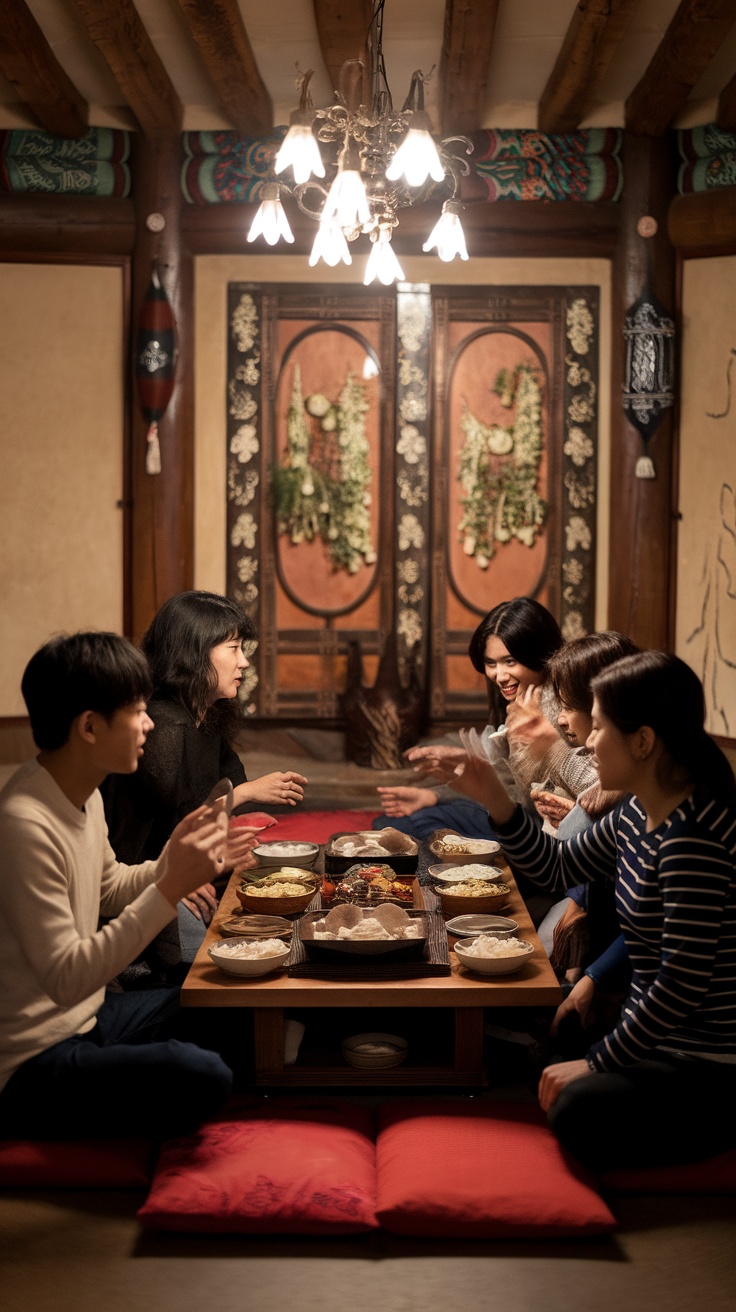
Korean dining is a delightful experience, filled with a variety of side dishes known as banchan. These small plates are not just accompaniment; they bring vibrant flavors and textures to the table, enhancing the main dishes. Banchan can range from lightly pickled vegetables to spicy s
Korean dining culture is built on the idea of balance and respect for food. In Korea, meals are seen as a communal experience that should be enjoyed together. This philosophy directly influences the way banchan is served. Each side dish is crafted to enhance the main course, but also to provide a diverse sensory experience that engages all the senses. The emphasis is on variety and contrast — from crunchy, spicy kimchi to the delicate softness of steamed egg dishes like gyeran-mari.
Furthermore, Korean meals are centered around the principle of jeong, a concept of emotional connection and attachment to food and those we share it with. Banchan plays a key role in this, as it’s not just about the food itself but the joy of sharing the experience with others. Traditionally, all dishes are placed in the center of the table, allowing everyone to dig in and enjoy together, reinforcing the sense of unity and connection.
In Korean dining, meals are often served as a series of courses, with banchan rotating throughout the meal to keep the flavors fresh and engaging. The concept of variety and the constant availability of different side dishes enhances the overall meal experience, encouraging diners to explore and appreciate the myriad of flavors and textures available to them.
Health Benefits Of Multiple Side Dishes (Banchan 반찬)
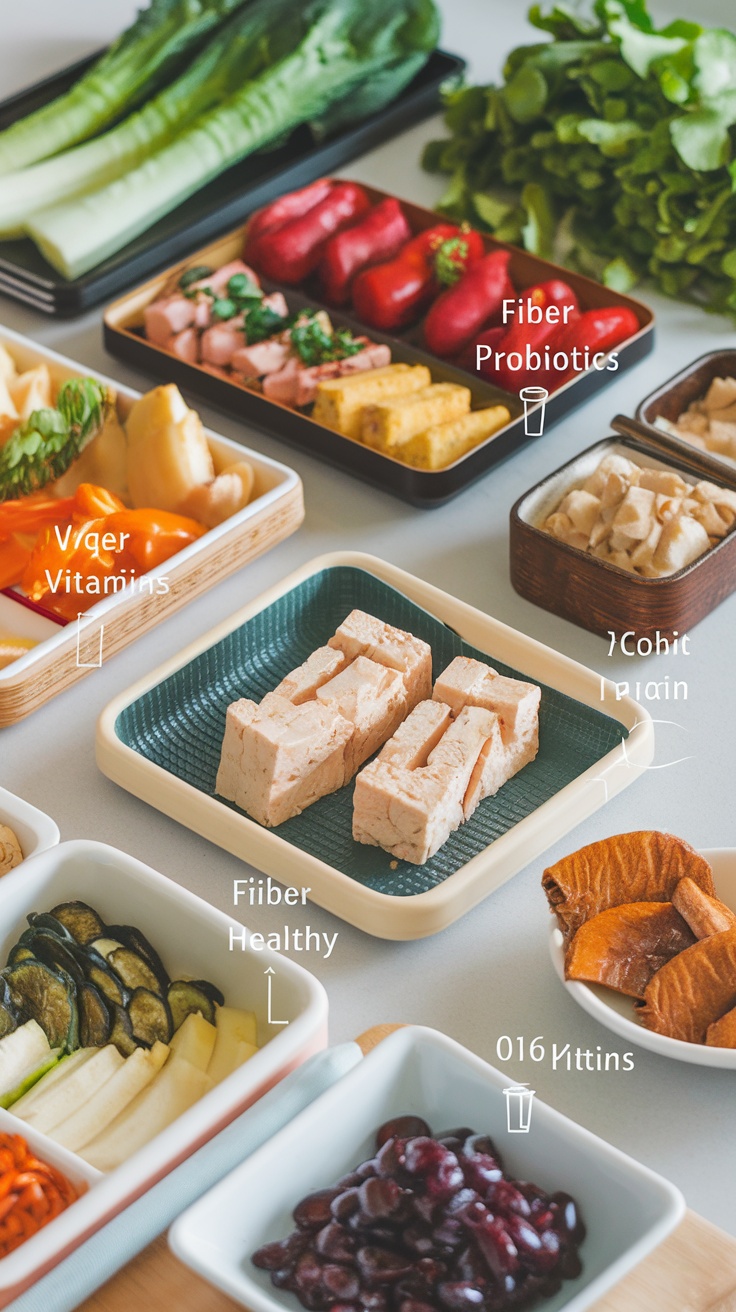
In addition to their cultural and culinary significance, banchan offers a wealth of health benefits. One of the key reasons for the abundance of side dishes in Korean meals is the emphasis on balance and nutritional value. The variety of banchan often includes an array of vegetables, fermented foods, and proteins, all of which contribute to a well-rounded diet.
Fermented dishes like kimchi are rich in probiotics, which promote gut health and boost the immune system. Meanwhile, many vegetable-based banchan, such as namul and muchim, are high in fiber and essential vitamins. For example, spinach, a common ingredient in namul, is packed with iron and antioxidants, while bean sprouts are an excellent source of vitamin C.
Furthermore, the diversity of banchan allows for moderation in portion sizes. Since the side dishes are served in small portions, diners can sample a variety of foods without overindulging in any one dish. This creates a more balanced, satisfying eating experience and is in line with traditional Korean dietary practices, which emphasize eating in moderation.
How Modern Korean Cuisine Keeps The Tradition Alive
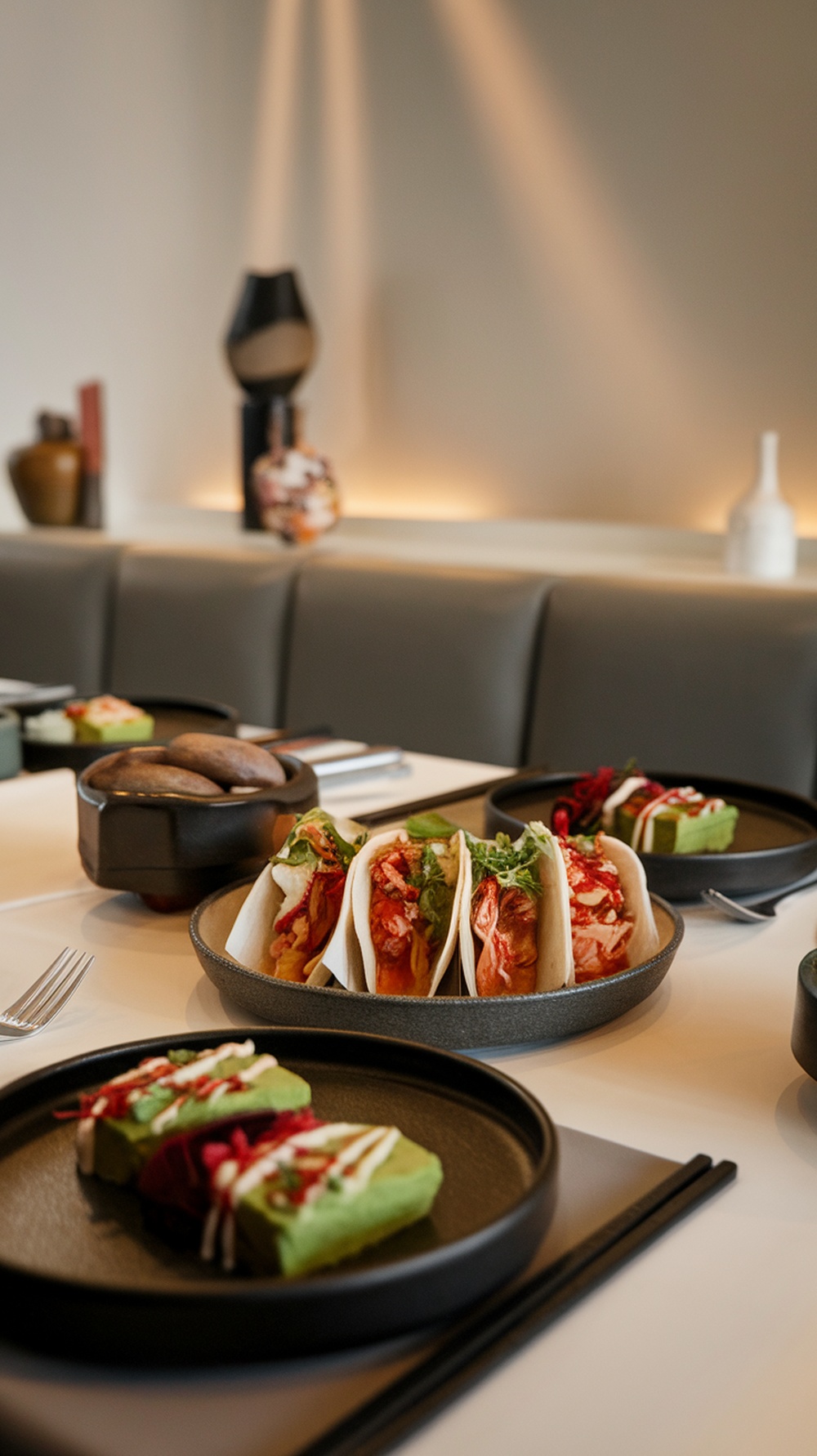
In today’s fast-paced world, Korean cuisine continues to honor the tradition of banchan, though there are some modern adaptations. While traditional banchan still dominates in many Korean homes and restaurants, younger generations are introducing new and creative twists on classic side dishes. For instance, fusion banchan, which might include kimchi with cheese or mayo-based salads, is becoming more common, especially in trendy urban areas.
In the modern culinary scene, banchan is not just limited to home-cooked meals. It has made its way into the global food market, with Korean restaurants around the world serving banchan as part of the dining experience. The increasing popularity of Korean food, thanks to the global spread of K-pop and Korean dramas, has made banchan an international phenomenon. Even outside Korea, people are discovering the joy of having a variety of side dishes at their table, further cementing banchan’s place in modern food culture.
Moreover, the concept of banchan has been embraced by health-conscious eaters, as many of the dishes are made with fresh, wholesome ingredients. Korean restaurants and home cooks alike are keeping the tradition alive while simultaneously evolving it to fit modern tastes and dietary preferences.
Conclusion
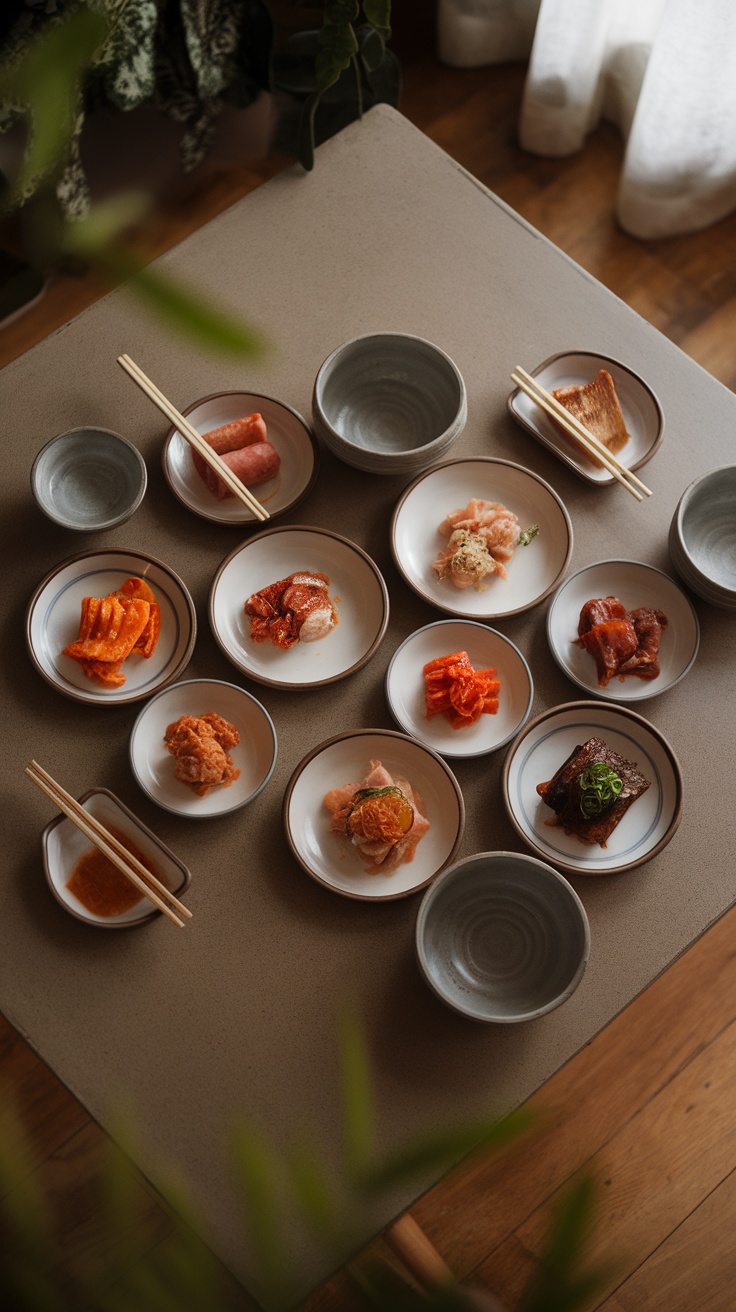
Banchan is much more than just a collection of side dishes; it’s a representation of Korean culture, history, and values. From its humble origins to its modern adaptations, banchan has remained a beloved tradition that continues to play a central role in Korean dining. Whether it’s the health benefits, the cultural significance, or the sheer joy of sharing so many different flavors with loved ones, the story of banchan reminds us that food is not just about nourishment — it’s about connection. So next time you enjoy a Korean meal, take a moment to appreciate the diverse and delicious side dishes on your table, and consider the rich history and tradition that makes each one so special.